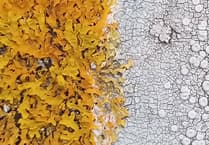The cold and wet weather of 2012 hit the UK's bumblebee and butterfly populations badly, but a local school has been working hard on a conservation project to benefit these important insects.
Two classes from Stackpole VC School have been helping Pembrokeshire Coast National Park Authority staff to plant a newly created wildflower meadow on the Ministry of Defence's Castlemartin Range.
The authority's Castlemartin ranger, Lynne Houlston, said: "The meadow is near the Castlemartin Camp entrance, and will help to link habitats which are particularly good for butterflies and bumblebees, who really took a battering last year in the long spells of cold and rain.
"Stackpole School pupils worked really hard to plant around 1,200 insect-friendly plug plants, which included birdsfoot trefoil, lady's bedstraw, St. John's wort, yarrow, knapweed, scabious and many others.
"Growing more wildflowers and insect-friendly plants lends a strong helping hand to help our bees, butterflies and pollinating bugs."
National Park Authority ranger Haydn Garlick and the authority's south voluntary wardens helped with turf removal and rotovating, with Lynne Houlston organising and ordering 19 different types of plants.
Haydn, Lynne and Natural Resources Wales staff member Jon Hudson also transplanted flower-rich turf from within Castlemartin Range to a separate area next to the meadow as an experiment to compare how each area develops.
The planting builds on the success of project work since 2009 in partnership with the Bumblebee Conservation Trust, NRW, Pembrokeshire Coast National Park Authority and the Ministry of Defence.
There is an interpretation panel about the Castlemartin Range Trail and leaflet box attached to the back of the Bus Stop next to the meadow and benches will be installed shortly.
The Castlemartin Range Trail is a 9km trail established in 2010 for the enjoyment of walkers, cyclists and horse riders funded by the Welsh
Government and MOD with additional support from the British Horse Society.
The school planting project was funded by the MOD, Natural Resources Wales and the Pembrokeshire Coast National Park Authority.





Comments
This article has no comments yet. Be the first to leave a comment.